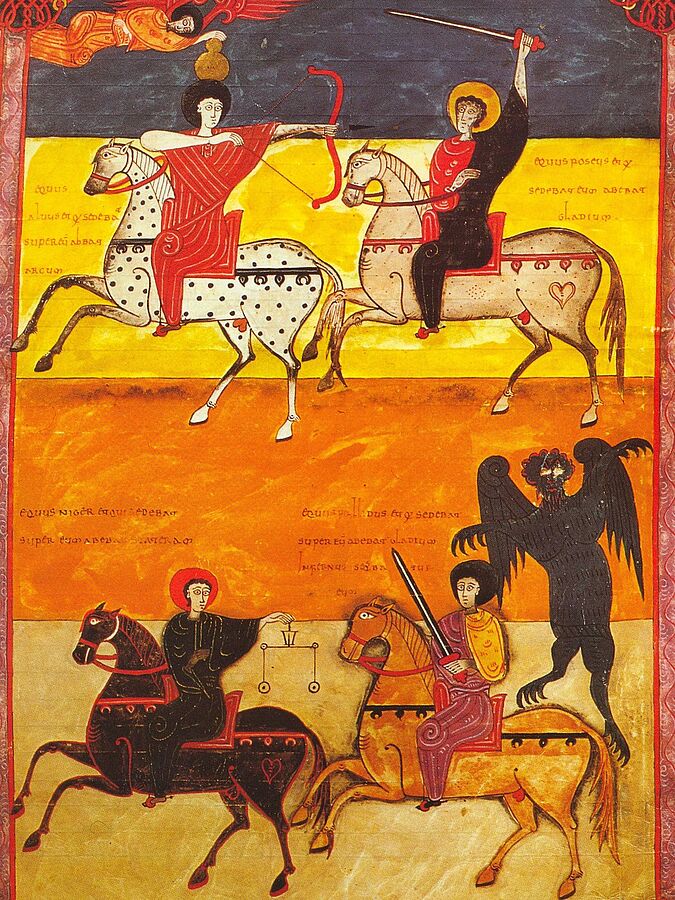Human preferences for horse coat colours have changed greatly over time and across cultures. Spotted and diluted horses were more frequent from the beginning of domestication until the end of the Roman Empire, whereas solid colours (bay, black and chestnut) were predominant in the Middle Ages. These are the findings of an international research team under the direction of the Leibniz Institute for Zoo and Wildlife Research (IZW). The results have just been published in the open access journal “Scientific Reports”.
The study reveals that the diversity of coat colours in horses has been strongly affected by cultural differences since their initial domestication around 3,500 BC. To investigate the history of domestic horses with respect to this charismatic phenotypic character, the scientists analysed a dataset of 201 samples of ancient horse DNA. In total, they detected 14 different colour types. Early breeds showed six colour variants, of which three were already present in pre-domestic horses. During the Bronze Age (2,700 - 900 BC) and Iron Age (900 BC – 400 AD) the number of colour variants further increased from six to nine, indicating a human preference for new colours. During these periods spotted and diluted horses were most frequent.
During medieval times, the attractiveness of spotted horses decreased and solid coat colours, especially chestnut, became dominant. Religious symbolism may have played a role in the shift from dominance to the decline of spotted horses. At the beginning of the Middle Ages this type was preferred by royalty, possibly influenced by the last book of the New Testament, the “Apocalypse of St. John” (AD 81-96). It described four riders on differently coloured horses. The rider of victory was sitting on a white or white spotted horse, whereas the riders of famine (black), death (bay) and war (chestnut) rode on solid coloured horses. After several epidemics this symbolism changed: the “good” rider of victory was replaced by the “bad” rider of the plague but still sitting on a white or white-spotted horse. Consequently, white and spotted horses now had a negative connotation, resulting in a lower religious prestige of these colourations. Further reasons for the decrease of spotted types might have been novel developments in weaponry such as the longbow, with these horses being an easier target than solid ones.
So far, little information about the history of horse domestication has been available since most previous findings concerned modern breeds. “Horses have undergone extensive breeding and breed-specific homogenisation, especially during the last few centuries. Therefore, analysing only modern individuals can lead to false conclusions about the history of the domestic horse,” says Dr Arne Ludwig, scientist at the Leibniz-IZW.
The present study is the most comprehensive to date, by addressing historical changes in a phenotypic character in ancient domestic animals and provides important implications regarding the origin and development of modern horses. Just like today, specific breeds were preferred by people not only because of their riding performance but also their visual appearance and attractiveness.
Publication:
Wutke S, Benecke N, Sandoval-Castellanos E, Döhle HJ, Friederich S, Gonzales J, Hallsteinn Hallsson J, Hofreiter M, Lõugas L, Magnell O, Morales-Muniz A, Orlando L, Pálsdóttir AH, Reissmann M, Ruttkay M, Trinks A, Ludwig A (2016): Spotted phenotypes in horses lost attractiveness in the Middle Ages. Scientific Reports. DOI: 10.1038/srep38548
Contact:
Leibniz Institute for Zoo and Wildlife Research (IZW) Arne Ludwig Tel.: +49 30 5168-125 seetizw-berlin.de |


